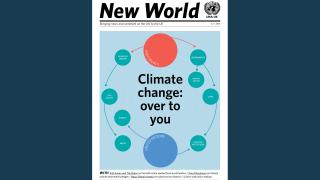
The level of global investment required to finance a low carbon transition – the myriad of clean energy, infrastructure, transport and water projects – is staggering. Simultaneously, new and emerging climate-based mitigation and adaptation principles must be incorporated into planning, design and operation to ensure resiliency against an uncertain future.
Figures in the trillions are regularly mentioned as being needed to bridge the investment gap between what policy-makers assess is needed, that is, the various goals outlined in Intended Nationally Determined Contributions (INDCs), and what financial markets are prepared to commit.
New sources of capital with a significantly longer-term investment horizon are needed to close this gap. Institutional investors, the giant pension and retirement funds and the associated asset managers and insurance companies that invest on behalf of those funds have the necessary capital and a professed interest in lifting their exposure to climate based investments.
Institutional investors have $93 trillion of assets under management in member states of the Organisation for Economic Cooperation and Development alone. At the UN climate summit in September 2014, investors with $43 trillion of assets under management said they ”stood ready” to invest in new climate-aligned assets.
However, for investors to increasingly allocate their capital to climate-friendly assets, these must offer competitive financial risk-adjusted returns. Green bonds offer one way to leverage increased capital towards tangible investment.
Bonds, especially to finance infrastructure, can offer long-term maturities. These are a good fit with institutional investors’ long-term liabilities, and allow asset-liability matching. They are also a source of much-needed diversification and more attractive yields, particularly in markets with a limited supply of bond instruments.
However, whilst large global asset managers and owners stand ready to commit, the policy frameworks and market structures around green bonds are not yet robust enough to drive the thousands of individual investment decisions required by 2020 and beyond.
The Climate Bonds Initiative works to address the barriers to green bond market growth through a three-pronged approach; creating a credible, internationally recognised certification standard for what is green; educating market players by providing analysis of green bond market trends; and, significantly, bridging knowledge gaps for policy-makers and regulators.
Currently, the only independent standards available in the market to assess bonds in sectors like energy, transport and water are the Climate Bonds Standards. Fiscal policy incentives that reference international standards as eligibility criteria would be a welcome development.
Market-led actions are an important starting point, but given the urgency of the climate challenge, public sector policy direction is crucial to establishing the regulatory structures and impetus behind market-driven actions to address barriers and act where the market has yet to do so.
Primary roles include ensuring that credible, long tail pipelines of green infrastructure projects are available for financing and taking an active stance in absorbing some investment risks in the initial stages of the market by providing credit enhancement. Other options include central bank preference for green investments particularly where they have a direct relationship with INDC objectives and use of credit enhancement tools. Development banks are also well placed to help build depth via initial green bond issuance and purchase - the twin actions leading other institutional investors into participation.
At the upcoming climate conference in Paris, the Climate Bonds Initiative and the UN Environment Programme will be releasing Scaling up Green Bond Markets for Sustainable Development- A Guide for Governments – a detailed manual for policy-makers, regulators and public financial institutions in developing international green bond markets.
Policy frameworks are fundamental to a sustainable trillion-dollar green bond market that plays its part in climate finance. The call to ‘build it and they will come’ is one for governments to heed as they seek to implement international climate agreements.
Sean Kidney is CEO of the Climate Bonds Initiative

















